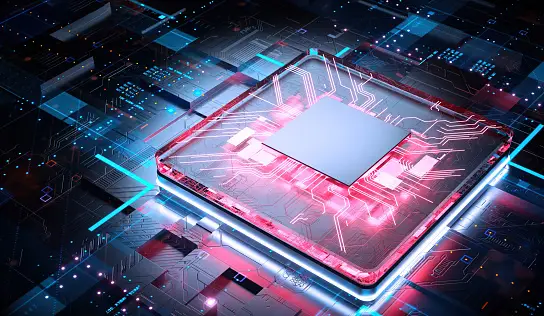
How Do Computer Processors Work In 2023? In today’s digital age, computer processors play a vital role in powering our devices and enabling us to perform various tasks efficiently. These small but powerful components are responsible for executing instructions and calculations, making them the heart of modern computing. In this article, we will explore how computer processors work in 2023, taking a closer look at their architecture, instruction execution process, and the advancements that have shaped the technology landscape.
Understanding Computer Processors
Definition and Purpose
Computer processors, also known as central processing units (CPUs), are electronic circuits that carry out instructions and perform calculations in a computer system. They act as the brain of the computer, handling various tasks, including executing programs, managing memory, and processing data.
Evolution of Processors
Computer processors have come a long way since their inception. They have evolved in terms of speed, complexity, and capabilities. Early processors had limited processing power, but advancements in technology have led to the development of faster and more efficient processors over time.
Key Components and Terminology
To understand how computer processors work, it’s essential to familiarize ourselves with key components and terminology associated with them. These include instruction sets, clock speed, cache memory, and registers.
Processor Architecture
Von Neumann Architecture
Most modern computer processors follow the Von Neumann architecture, named after the renowned mathematician John von Neumann. This architecture consists of a central processing unit, memory, input/output devices, and a control unit. It allows for the sequential execution of instructions, fetch-decode-execute cycles, and efficient data processing.
Instruction Fetch and Decode
The processor fetches instructions from memory and decodes them to determine the operation to be performed. The instruction set architecture (ISA) defines the set of instructions and their formats that the processor can execute.
Execution Units and Registers
A processor consists of various execution units responsible for carrying out specific tasks, such as arithmetic operations, logic operations, and memory access. Registers, on the other hand, are small, high-speed memory locations that store data for quick access during processing.
Read More: Best Reasons to Try Music Therapy In 2023
Instruction Execution Process
Fetching Instructions
During the fetch stage, the processor retrieves instructions from memory based on the program counter. The program counter keeps track of the memory address of the next instruction to be fetched.
Decoding Instructions
Once the instructions are fetched, the processor decodes them to understand the operation to be performed. It analyzes the opcode and operand fields of the instruction to determine the required actions.
Executing Instructions
In the execution stage, the processor performs the required operations specified by the decoded instructions. This involves manipulating data, performing calculations, and interacting with memory and input/output devices.
Storing Results
After executing an instruction, the processor stores the results in the appropriate memory location or register. This ensures that the data is readily available for future use or further processing.
Advanced Processor Technologies
Multicore Processors
Multicore processors have become prevalent in recent years. They consist of multiple processor cores on a single chip, allowing for parallel execution of instructions. This enables better multitasking and improved performance for applications that can leverage multiple cores.
Hyper-Threading Technology
Hyper-Threading is a technology introduced by Intel that enables a single physical processor core to execute multiple threads simultaneously. This technology improves overall performance by making more efficient use of available resources.
Caches and Memory Hierarchy
Processors employ cache memory to store frequently accessed data and instructions. Caches provide faster access compared to main memory, reducing the time it takes for the processor to retrieve information. The memory hierarchy ensures that data is available at the right level of the hierarchy for faster processing.
Pipelining and Superscalar Execution
Pipelining and superscalar execution techniques enable processors to execute multiple instructions simultaneously, increasing overall throughput. Pipelining divides the instruction execution process into stages, allowing for parallel processing of multiple instructions. Superscalar execution takes it a step further by executing multiple instructions in a single clock cycle.
Future Trends and Innovations
Quantum Computing
Quantum computing holds the potential to revolutionize the field of computing. Unlike classical processors that use bits, which represent either a 0 or 1, quantum computers use qubits, which can represent multiple states simultaneously. This promises to solve complex problems more efficiently and enable breakthroughs in fields such as cryptography and optimization.
Neuromorphic Processors
Neuromorphic processors aim to mimic the structure and functionality of the human brain. These processors are designed to perform tasks such as pattern recognition and machine learning more efficiently. By leveraging the brain’s neural network architecture, neuromorphic processors have the potential to achieve remarkable advancements in artificial intelligence.
Energy Efficiency and Power Management
As technology continues to advance, energy efficiency and power management are critical considerations for processor design. Manufacturers are focusing on developing processors that deliver high performance while minimizing power consumption. This leads to more sustainable computing solutions and longer battery life for portable devices.
Conclusion
Computer processors have undergone significant advancements, enabling the rapid progress of the digital age. Understanding how these processors work helps us appreciate their role in powering our devices and driving technological innovation. As we move forward, it is exciting to envision the future possibilities brought about by emerging technologies and the continued evolution of computer processors.











